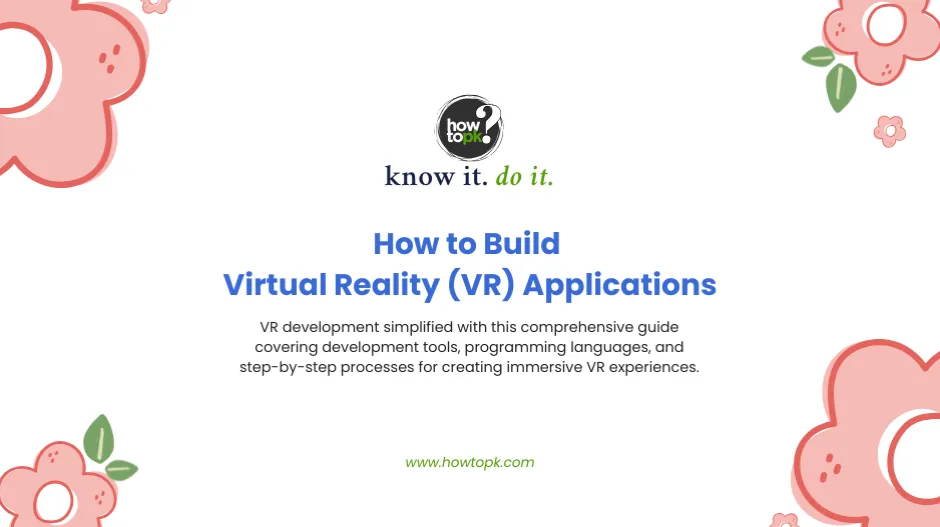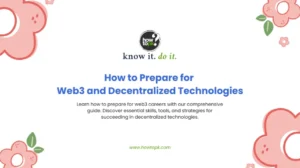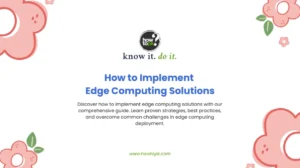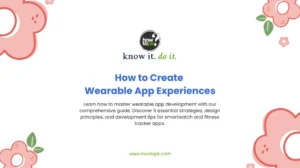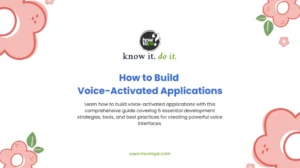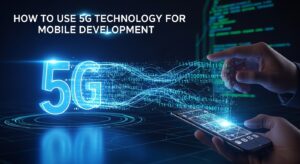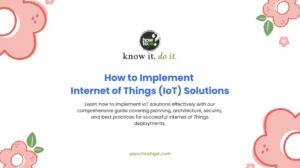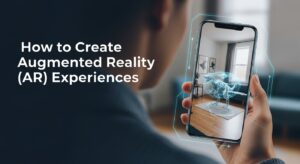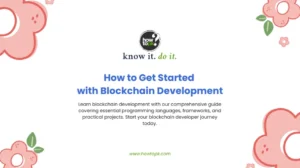Building virtual reality applications has transformed from a niche specialty into an accessible skill that developers across industries are embracing. Whether you’re creating immersive gaming experiences, educational simulations, or enterprise training programs, VR development offers unprecedented opportunities to engage users in ways traditional applications simply cannot match.
The VR market is projected to reach $87 billion by 2030, making now the perfect time to master VR development skills. This comprehensive guide will walk you through everything you need to know about creating compelling virtual reality experiences, from choosing the right tools to deploying your finished application.
Understanding VR Development Fundamentals
Before diving into the technical aspects of VR development, it’s crucial to understand what makes virtual reality unique. Unlike traditional applications that users interact with through screens and input devices, VR applications must create believable three-dimensional environments that respond to head movements, hand gestures, and spatial positioning.
VR development requires mastering several key concepts including 3D graphics programming, spatial audio implementation, performance optimization for real-time rendering, and user experience design principles specific to immersive environments. The most successful VR applications seamlessly blend these elements to create experiences that feel natural and engaging.
Essential Tools and Platforms for VR Development
Game Engines for VR Development
Unity 3D remains the most popular choice for VR development, offering robust support for all major VR platforms including Oculus, SteamVR, and PlayStation VR. Unity’s XR Toolkit provides pre-built components for common VR interactions like teleportation, object manipulation, and UI systems. The engine’s visual scripting system makes it accessible to developers with varying programming experience levels.
Unreal Engine provides another powerful option, particularly for developers creating high-fidelity visual experiences. Epic Games’ engine excels at rendering realistic environments and offers built-in VR templates that significantly reduce initial development time. The Blueprint visual scripting system allows rapid prototyping without extensive coding knowledge.
Programming Languages for VR Applications
C# serves as the primary programming language for Unity VR development, offering excellent performance and extensive documentation. Developers familiar with object-oriented programming will find C# intuitive for implementing VR-specific features like hand tracking and spatial interaction systems.
C++ provides maximum performance for Unreal Engine VR projects, though it requires more advanced programming skills. For web-based VR experiences, JavaScript combined with WebXR APIs enables cross-platform compatibility without requiring users to install dedicated applications.
Step-by-Step VR Development Process
Phase 1: Planning and Design
Begin every VR development project by clearly defining your target audience and use case. Consider whether users will experience your application while seated, standing, or moving around a room-scale environment. This decision fundamentally impacts your design choices and interaction systems.
Create detailed storyboards and wireframes that account for 360-degree environments rather than traditional flat interfaces. VR applications benefit from spatial design thinking where information and interactive elements are distributed throughout three-dimensional space rather than confined to rectangular screens.
Phase 2: Environment Creation and 3D Modeling
Develop your virtual environments using 3D modeling software like Blender, Maya, or 3ds Max. Focus on creating optimized models that maintain visual quality while meeting VR performance requirements. VR applications typically need to render at 90 frames per second or higher to prevent motion sickness, making polygon count optimization crucial.
Pay special attention to scale and proportion since users will experience your 3D models from a first-person perspective. Objects that appear correctly sized in traditional 3D applications may feel uncomfortably large or small in VR environments.
Phase 3: Implementing VR Interactions
Design interaction systems that feel intuitive and natural to VR users. Common interaction patterns include gaze-based selection, hand controller pointing, and direct hand manipulation. Implement feedback systems like haptic vibration and spatial audio cues to confirm user actions and enhance immersion.
Consider accessibility in your interaction design by providing multiple ways to accomplish the same tasks. Some users may prefer teleportation movement while others are comfortable with smooth locomotion systems.
Phase 4: Testing and Optimization
VR applications require extensive testing across different hardware configurations and user types. Test your application with users who have varying levels of VR experience, as newcomers often identify usability issues that experienced users might overlook.
Monitor performance metrics carefully during testing, focusing on maintaining consistent frame rates and minimizing latency between user input and visual response. Tools like Unity’s Profiler help identify performance bottlenecks in complex VR scenes.
Platform-Specific Development Considerations
Oculus Platform Development
Oculus provides comprehensive SDKs for developing applications targeting Quest, Rift, and other Meta VR headsets. The Oculus Integration package for Unity includes optimized rendering pipelines and hand tracking capabilities specific to Meta devices. Developers can leverage Oculus Developer Center resources for platform-specific guidelines and submission requirements.
SteamVR Development
SteamVR supports the widest range of PC-based VR hardware, making it an excellent choice for reaching diverse audiences. The OpenVR SDK provides hardware-agnostic APIs that work across different headset manufacturers. This approach requires more initial setup but offers greater flexibility in targeting multiple hardware platforms simultaneously.
WebVR and WebXR Development
Web-based VR development enables users to access VR experiences directly through browsers without installing dedicated applications. The WebXR Device API provides standardized interfaces for creating cross-platform VR experiences that work on desktop and mobile devices.
Advanced VR Development Techniques
Spatial Audio Implementation
Effective spatial audio significantly enhances VR immersion by providing realistic 3D soundscapes that respond to user head movement and position. Implement distance-based volume falloff, environmental reverb, and directional audio cues to create believable acoustic environments.
Popular spatial audio solutions include Google Resonance Audio, Microsoft Spatial Audio Platform, and Steam Audio. Each offers different features and performance characteristics suitable for various VR application types.
Hand Tracking and Gesture Recognition
Modern VR systems increasingly support hand tracking without requiring controllers, opening new possibilities for natural interaction design. Implement gesture recognition systems that respond to common hand movements like pinching, pointing, and grabbing motions.
Consider providing visual feedback that helps users understand when their hand positions are being tracked accurately. Subtle particle effects or outline highlighting can communicate tracking status without breaking immersion.
Multi-User VR Experiences
Networked VR applications enable multiple users to share virtual spaces and collaborate in real-time. Implement synchronization systems that maintain consistent state across all connected clients while minimizing network latency.
Consider using specialized networking solutions like Photon Fusion or Mirror Networking that provide VR-optimized features for avatar synchronization and spatial voice communication.
Performance Optimization Strategies
Optimization Area | Technique | Impact Level |
Rendering | Level-of-detail (LOD) systems | High |
Textures | Texture atlasing and compression | Medium |
Lighting | Baked lighting vs. real-time | High |
Physics | Simplified collision meshes | Medium |
Audio | Compressed audio formats | Low |
VR applications demand significantly more performance than traditional 3D applications due to stereoscopic rendering requirements and high frame rate targets. Implement aggressive culling systems that only render objects within the user’s field of view, and use techniques like foveated rendering when supported by the target hardware.
Deployment and Distribution
App Store Submission Process
Each VR platform maintains specific submission guidelines and review processes. The Oculus Store requires applications to meet strict performance and comfort guidelines, while SteamVR offers more flexibility but expects comprehensive testing documentation.
Prepare detailed submission packages that include gameplay videos, screenshots, and technical specifications. Many VR platforms require age ratings and content warnings for applications that might cause motion discomfort.
Distribution Alternatives
Consider alternative distribution methods like sideloading for enterprise applications or web-based deployment for broader accessibility. Some educational institutions prefer web-based VR applications that don’t require administrative privileges for installation.
Direct distribution through your own website can provide more control over user experience and data collection, though it requires more marketing effort to reach potential users.
Future Trends in VR Development
The VR development landscape continues evolving rapidly with emerging technologies like eye tracking, brain-computer interfaces, and advanced haptic feedback systems. Stay informed about new hardware capabilities and development tools by following industry resources like the IEEE Virtual Reality Society and attending VR development conferences.
Mixed reality (MR) and augmented reality (AR) convergence is creating new opportunities for developers who understand both virtual and real-world integration. Consider how your VR development skills might transfer to these expanding fields.
Getting Started with Your First VR Project
Ready to begin your VR development journey? Start with a simple project that focuses on one core interaction or experience rather than attempting to build a complex application immediately. Many successful VR developers began with basic scene exploration or simple puzzle games before advancing to more sophisticated projects.
Download Unity and the XR Toolkit, then work through the official VR development tutorials to build foundational skills. Join VR development communities on platforms like Discord and Reddit where experienced developers share knowledge and provide feedback on works in progress.
The key to successful VR development lies in understanding both the technical requirements and the unique user experience considerations that make virtual reality compelling. By following the structured approach outlined in this guide and continuously experimenting with new techniques, you’ll develop the skills necessary to create engaging VR applications that users will want to experience repeatedly.
VR development is as much about creating emotional connections as it is about technical implementation. The most memorable VR experiences combine solid technical foundations with thoughtful design that takes advantage of the unique possibilities that virtual reality offers.

